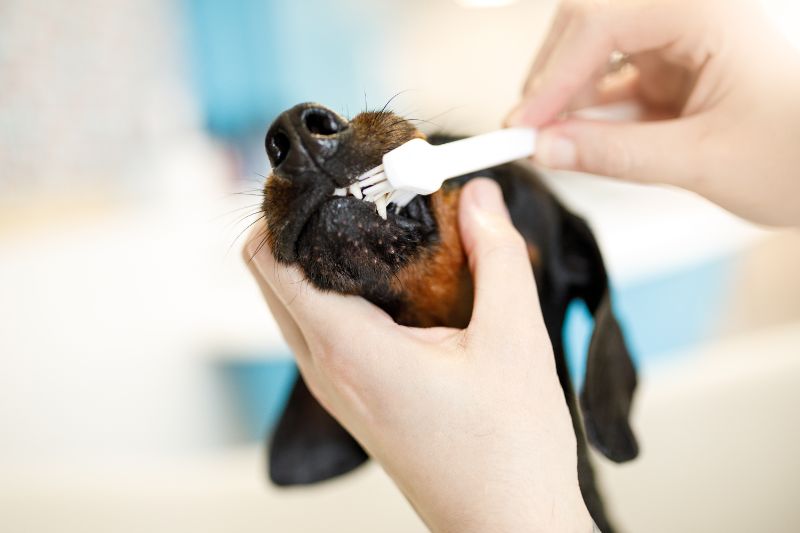What A Smile! Tips for Brushing Your Pet’s Teeth

As humans, brushing our teeth is (hopefully)part of our daily routine. Without it, we know that plaque, tartar, and odor would build up until the acrid taste and ache of disease emanated unpleasantly from our mouths.
Our pets might not have the ability to brush their own teeth, but they are at risk for these same oral health issues without regular efforts to keep the teeth and gums clean. Many modern pet owners are coming to understand the important role that pet dental health has on an animal’s health and longevity. Keeping your furry friend’s teeth clean also vastly improves the condition of their breath.
At MarketPlace Veterinary Hospital, we know that pet dental health is the foundation of your animal’s overall health. Not only is maintaining clean teeth and gums the foundation of keeping your pet’s teeth healthy for life, but it significantly decreases the likelihood they will develop more serious dental disease down the road. Simply cleaning your pet’s teeth regularly can save you the hassle and the cost of dealing with more serious dental issues in pets.
If the thought of brushing your dog or cat’s teeth has your anxiety levels rising, take a deep breath. With the proper tips, it really is not as difficult as it sounds. Here’s what you need to know:
Will You Open Wide?
One of the most daunting aspects of brushing your pet’s teeth can be the very first step. Pet owners sometimes find it difficult to get their pets to open their mouths wide enough for the toothbrush. Before you jump right into a brushing routine, spend some time getting you and your pet comfortable with the act of putting your fingers in their mouth.
This step of the process is often easier with puppies and kittens than with older dogs and cats. Since puppies and kittens still find excitement in exploring the world with their mouths, they do not usually have an issue with you putting a toothbrush there. If you can start brushing your pet’s teeth when they are in their youthful years, it will be much easier to turn this into a lifelong habit for you both.
Don’t worry if you have an older pet, though, as they can also be taught how to tolerate getting their teeth cleaned. It may take a little longer for the both of you, but you can get there! Tuna-flavored toothpaste will help, too – we promise!
There are a variety of pet-friendly flavors of toothpaste, so spend some time experimenting to find one that really gets them excited to get a taste. Some people even use this toothpaste as a positive reward during training, which can help your pet associate it with a positive memory.
Give your pet time to sniff, lick, and get comfortable with the toothpaste before you really start a brushing routine. You should never use human toothpaste for pets! Certain ingredients in human toothpaste are toxic to our furry friends, making them a big no-no!
Brushing Your Pet’s Teeth
After the acclimation period of having your finger in their mouths, you can start to introduce the toothrbush. You can choose a more traditional toothbrush shape or opt for a textured finger covering that allows you to actually brush with your finger. Most starter kits come with both, so try each out to see which one you and your pet like best.
Don’t forget to give your pet some time to get to know the toothbrush with some time to sniff it. Add some toothpaste and let them sniff it again. Once they have had their fill of exploring this new device, gently start to brush their teeth.
Patience Makes Perfect
Learning to brush your pet’s teeth is all about patience and practice. Even if you have a few failed attempts, don’t give up on your pet and their oral health. Make the experiments short and enjoyable and stop when either of you starts to get frustrated. With some time, this will become a regular and accepted practice that keeps your pet’s teeth healthy and his breath smelling fresh.
If you have further questions, please ask at your pet’s next appointment! We would be happy to answer your questions and show you a few tricks, first-hand.

